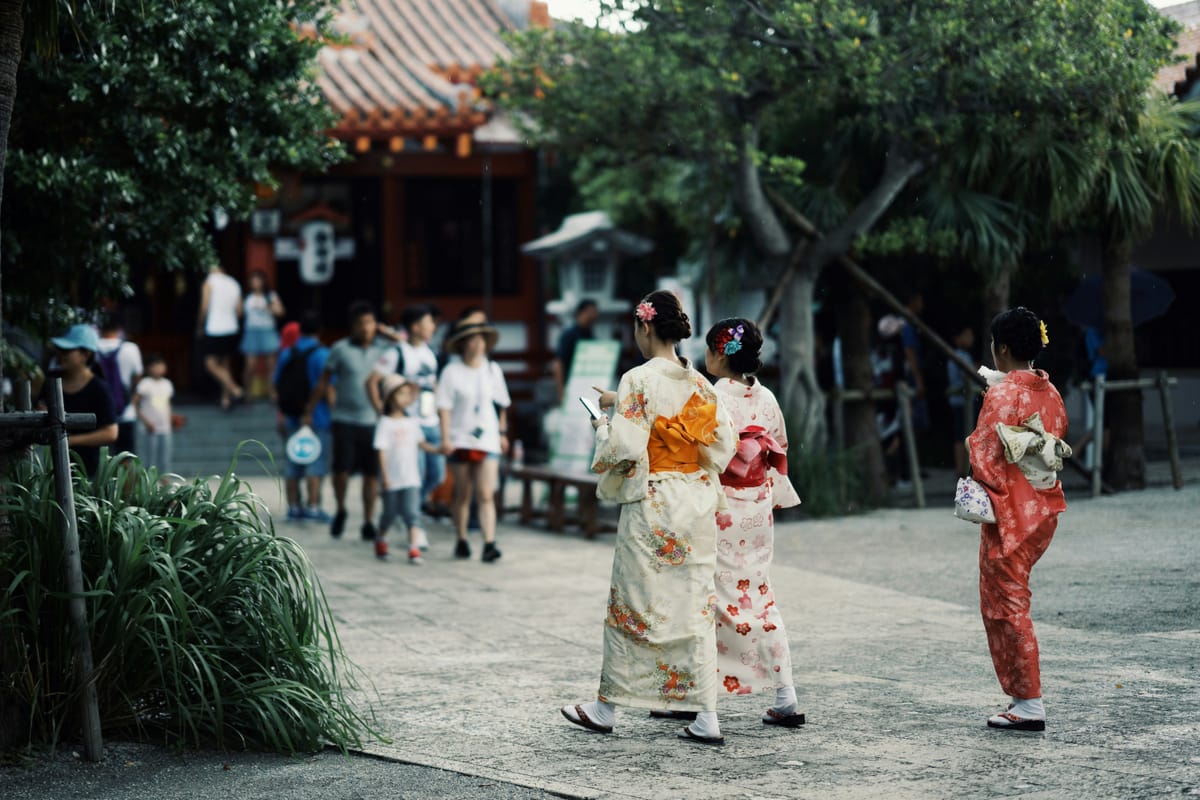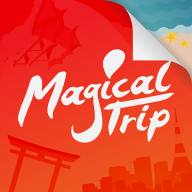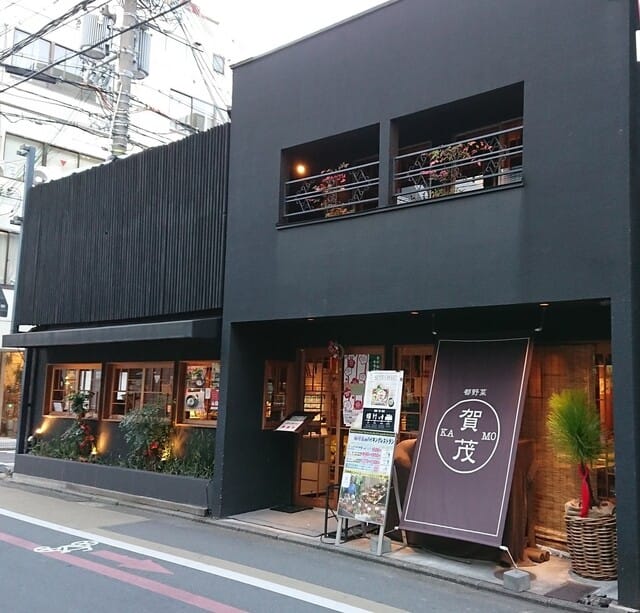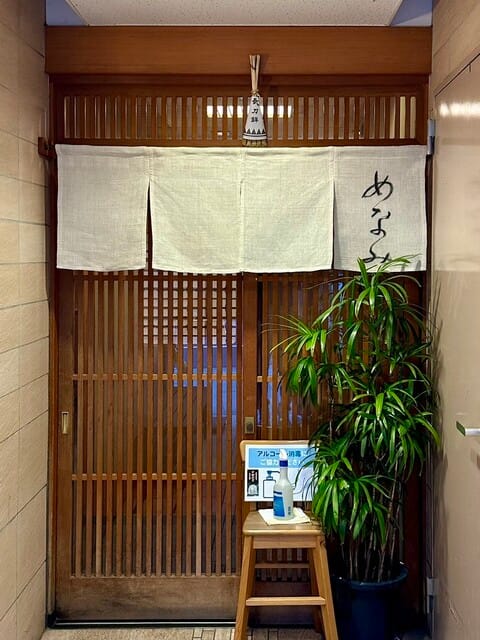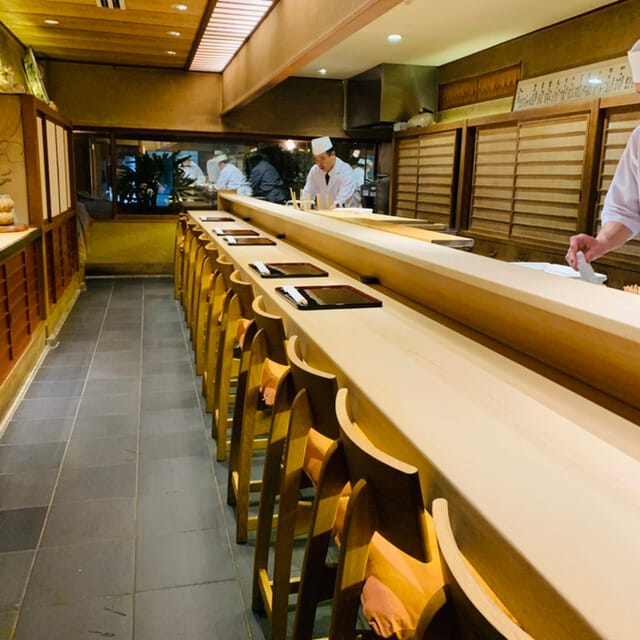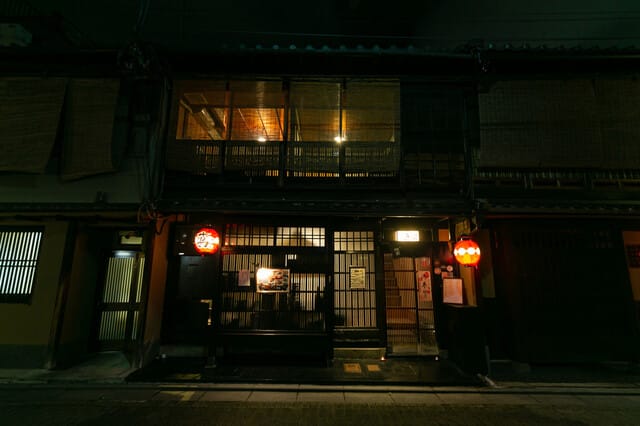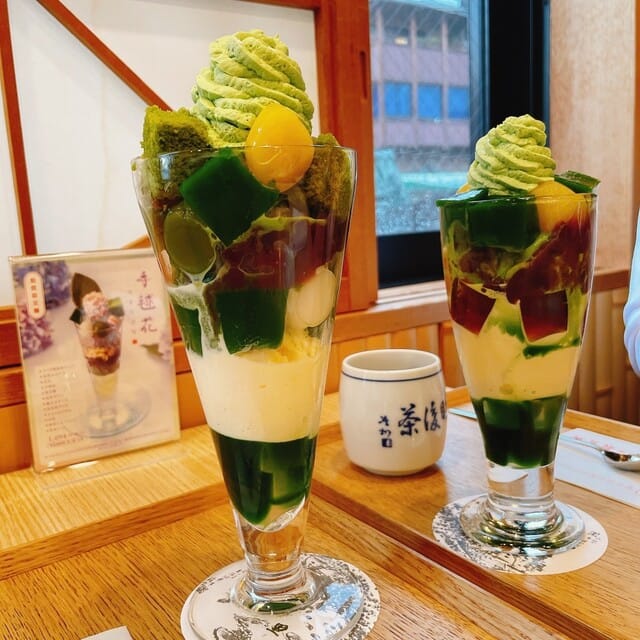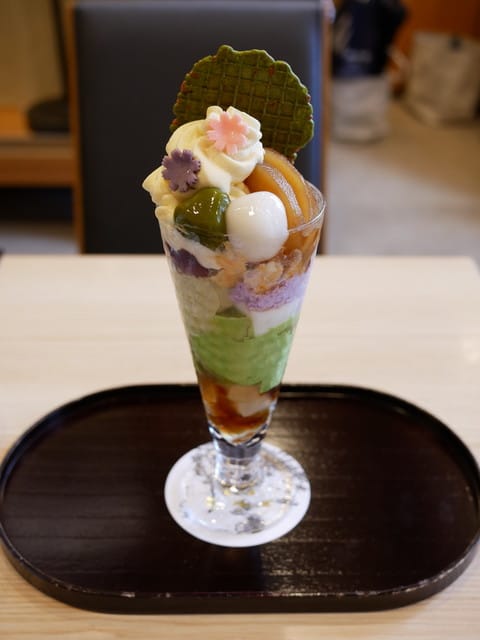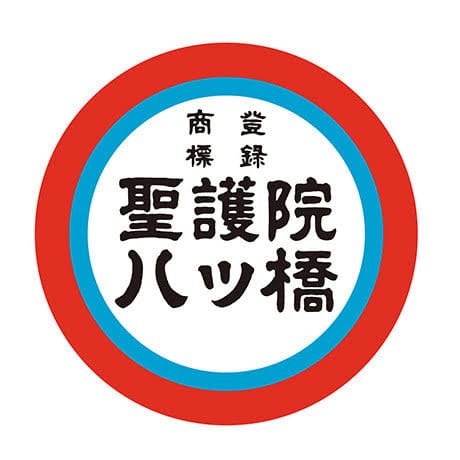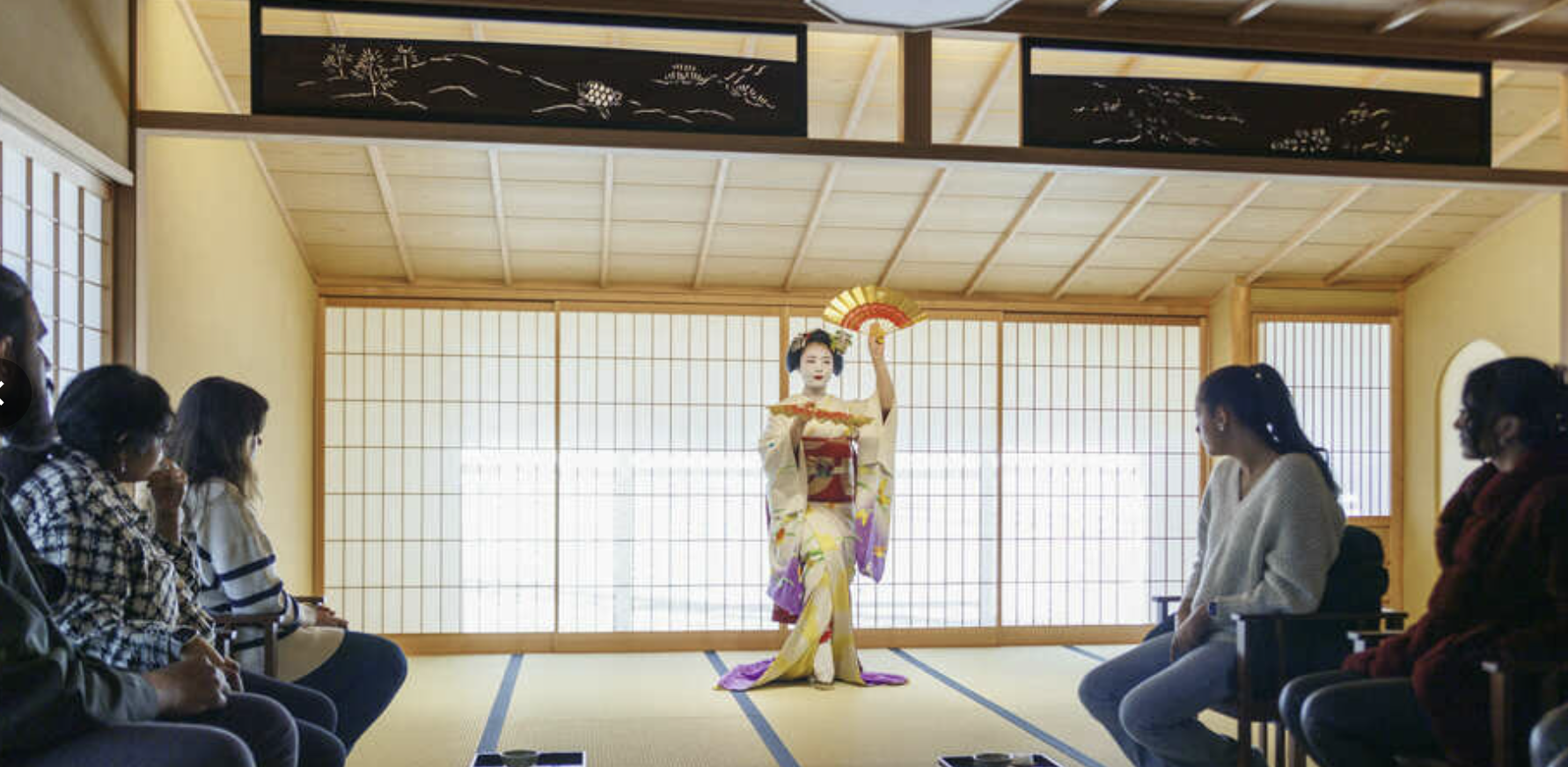Kyoto is Japan's representative ancient capital, a city we Japanese are proud of for its atmospheric townscape, historical buildings, and deeply rooted traditional culture.
Within Kyoto, the Gion area is known as the center of maiko and geisha culture, a place that embodies traditional beauty.
I previously lived in Kyoto for two years. During that time, I visited Gion many times and was captivated by its uniquely formal atmosphere. Even now, when I go to Kyoto and walk those stone-paved alleys, I feel as if I've traveled back in time.
Old buildings and "ryotei" (traditional Japanese restaurants) line the streets, with lantern lights casting a magical glow on the townscape. Occasionally, I would catch glimpses of maiko or geiko (Kyoto dialect for geisha), and I couldn't help but be mesmerized by their beautiful kimono figures.
Gion also offers a wide range of dining options, with a rich food culture including obanzai (Kyoto-style side dishes), Kyoto cuisine, and Japanese-style sweets. If you go to Nishiki Market, you can also enjoy Kyoto's street food.
Through this article, I want foreign visitors to discover the charms of Gion. I'll provide content to help you understand and fully enjoy Gion, including its historical background, highlights, gourmet options, festivals, and tours.
Gion is the essence of Kyoto culture. It's a place where you can rediscover the aesthetic sense that you might have forgotten in the modern urban world. I hope you'll explore this profound world with this guide in hand!

If you are looking for Comprehensive Kyoto Guide, check the article below! I summarized how and where you can enjoy different areas of Kyoto as much as possible.
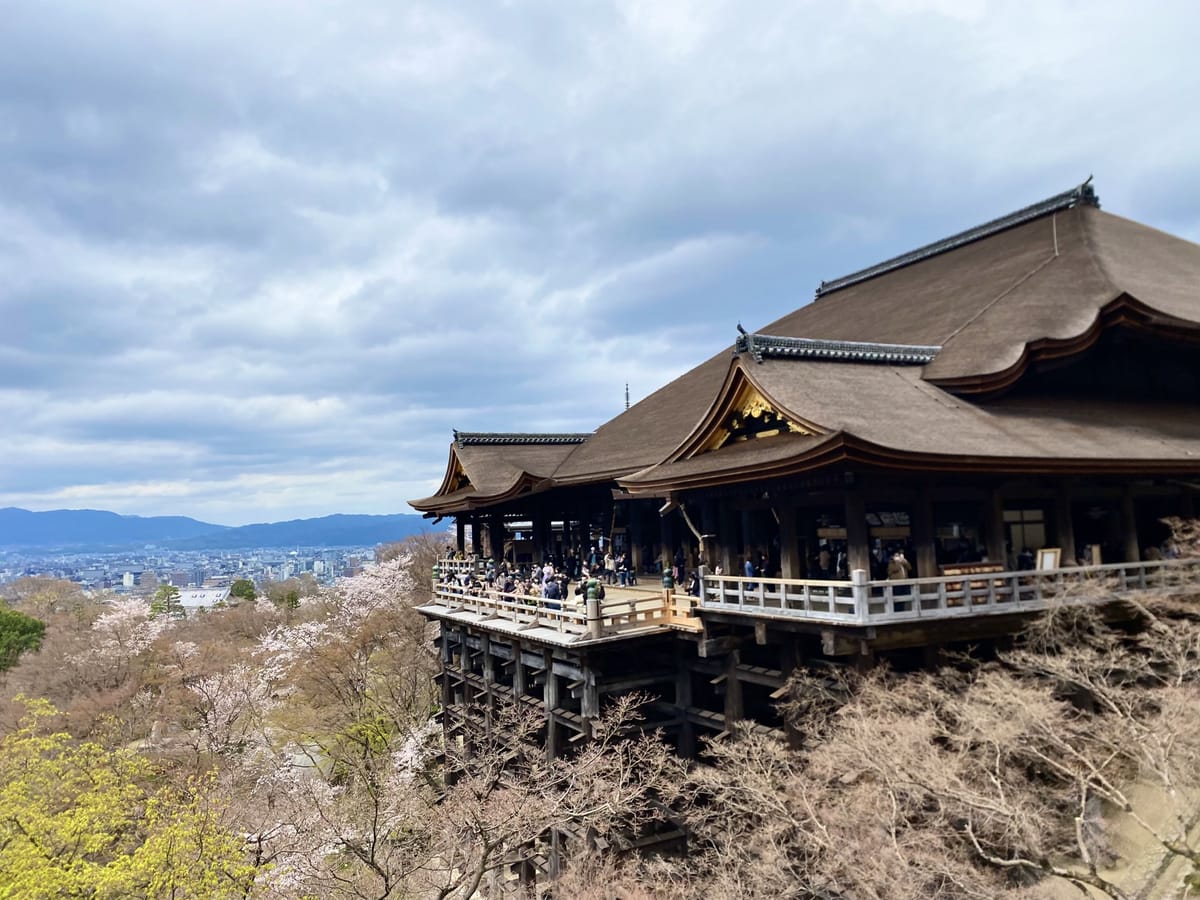
Table of Contents
・What is Gion?
・How to Get to Gion
・Highlights of Gion
・Where Can You Meet Maiko and Geisha?
・About the Gion Festival
・Kyoto Tourist Spots You Can Visit Along with Gion
・Gourmet Experiences in Gion
・Tours and Attractions to Fully Enjoy Gion
・Frequently Asked Questions About Visiting Gion
What is Gion?
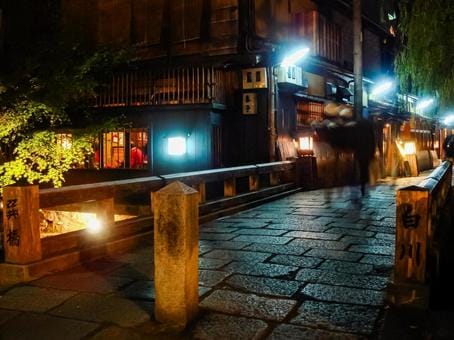
First, let me explain what kind of area Gion is.
Gion is located in the eastern part of Kyoto City and developed as a temple town in front of Yasaka Shrine. It's known as an area where geisha and maiko culture flourished since the Edo period, and that tradition remains strong even today.
Stone-paved alleys lined with old buildings create an atmospheric scenery wherever you look. There are also many historical buildings, restaurants, and high-class ryotei scattered around, making it an area that truly encapsulates the essence of Kyoto.
This Gion area is a popular spot that attracts many tourists from both Japan and abroad. It's one of the representative areas for Kyoto sightseeing even for Japanese people. In other words, it's a place that no tourist should miss.
How to Get to Gion
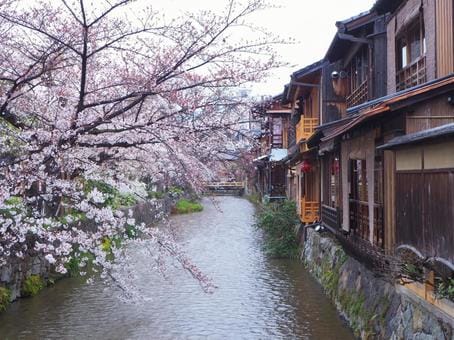
Now, how can you get to Gion? Let me introduce the access methods.
If you're visiting Gion, aim for either Gion-Shijo Station on the Keihan Line or Kawaramachi Station on the Hankyu Line. From either station, you're just a short walk from the center of Gion.
If you're coming from Kyoto Station, I recommend taking the Karasuma Subway Line to Shijo Station, then transferring to the Hankyu Line and getting off at Kawaramachi Station.
Google Maps might suggest bus routes, but they can get quite crowded, so I don't recommend them. In my opinion, having lived in Kyoto, using the train is the smoothest way to reach Gion.
Highlights of Gion
Now, let me introduce the highlights of Gion.
The "Gion" You Imagine is "Hanami-koji"
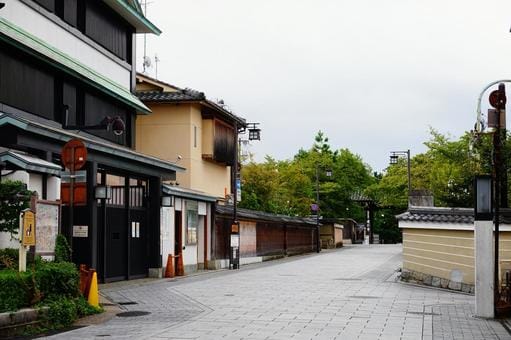
When you think of "Gion," you probably imagine scenic stone-paved alleys. The epitome of this is "Hanami-koji," located on the east side of Yasaka Shrine.
This street, lined with old buildings that retain the atmosphere of the Edo period, is truly a symbol of Gion. High-class ryotei restaurants stand side by side, and at night, lantern lights create a fantastical atmosphere. If you're lucky, you might even catch a glimpse of maiko or geiko.
However, due to issues with tourists' manners when taking photos of geisha and maiko, photography is now prohibited in this area. I recommend taking in the scenery with your eyes and savoring it slowly.
If you are interested in Gion Hanami-koji, check the article below! I summarized in more details and how I felt there.
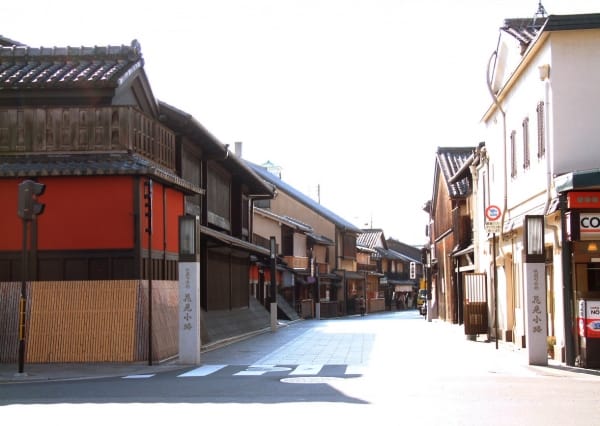
Yasaka Shrine
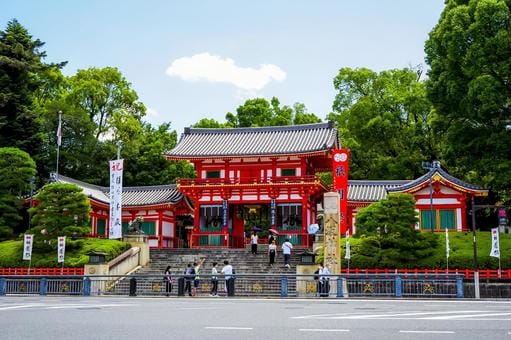
Yasaka Shrine, which can be called the symbol of Gion, is another must-see highlight. This shrine, which is also the stage for the Gion Festival, is a venerable ancient shrine founded over 1,000 years ago in the Heian period and is designated as a national important cultural property.
The architectural structures are beautiful, and their majestic appearance takes my breath away. It's a central spot for Gion sightseeing where you can feel the history of Kyoto.
Website: https://www.yasaka-jinja.or.jp/en/
Maruyama Park
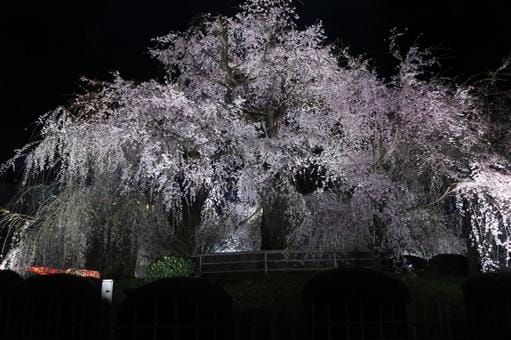
Maruyama Park, located right next to Yasaka Shrine, is another spot I'd like to visit during my Gion tour.
This park is known as a famous cherry blossom viewing spot, attracting many flower-viewing visitors in spring. The scenery is particularly breathtaking from late March to April. You could say it's a place that heralds the arrival of spring in Gion.
If you're visiting Gion in spring, I highly recommend stopping by.
Website: https://kyoto-maruyama-park.jp/
Pontocho
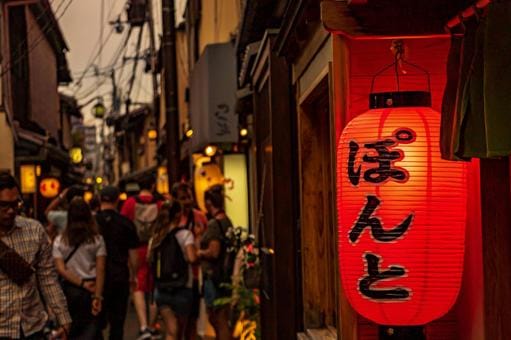
Pontocho, located on the north side of Hanami-koji, is another area you shouldn't miss when touring Gion. Known as a hanamachi (geisha district) since the Edo period, this street with its narrow stone-paved alleys lined with old teahouses and ryotei is truly a spot where you can feel the Kyoto-like atmosphere.
At night, it's illuminated by lanterns, creating an even more atmospheric ambiance. Here too, you might catch glimpses of maiko or geiko, but as I mentioned earlier, taking photos of them is prohibited.
One of the charms of Pontocho is the many buildings that exude history. I suggest you take a leisurely stroll on the stone pavement and enjoy this traditional atmosphere.
Website: https://www.ponto-chou.com/
If you are interested in Pontocho, check the article below! I summarized how and where you can enjoy Pontocho as much as possible.
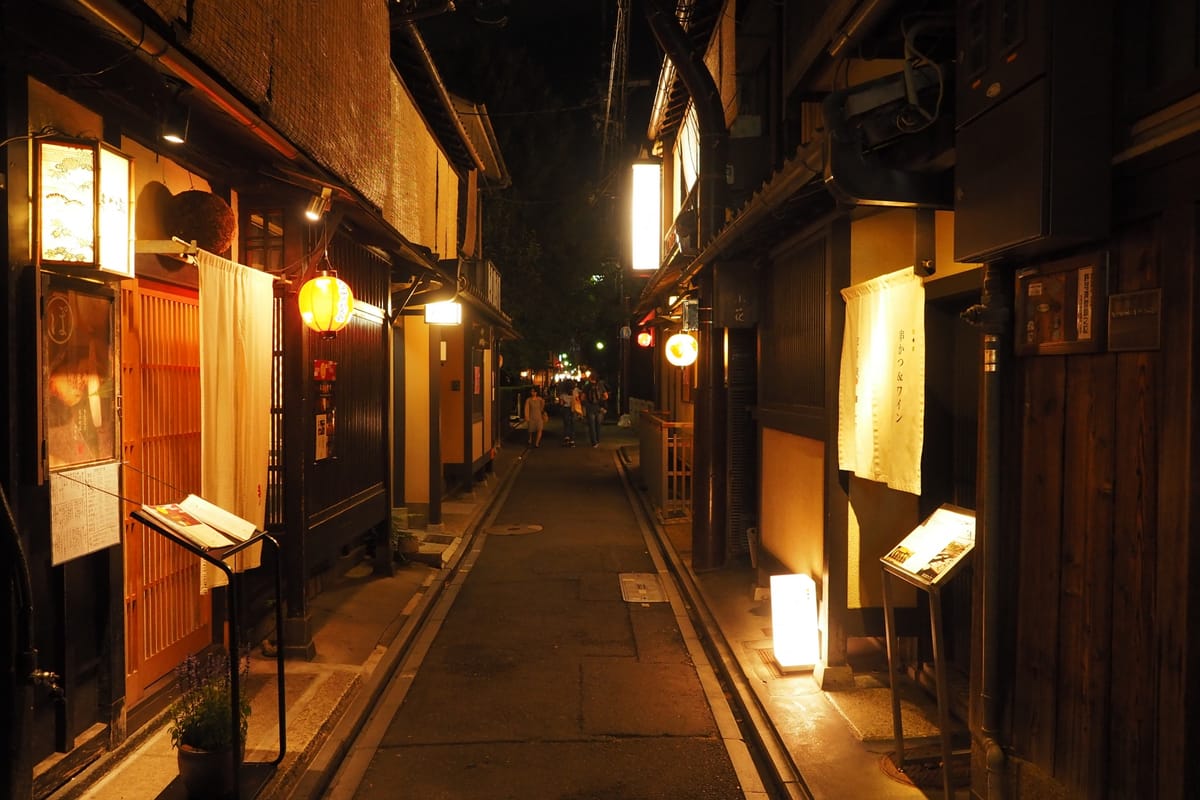
Nishiki Market
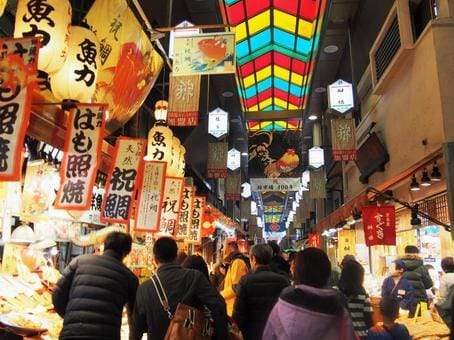
If you extend your walk a bit from Gion, you can reach Nishiki Market, Kyoto's largest market. Located about a 5-minute walk away, this market is lined with about 130 shops selling fresh fish, Kyoto vegetables, pickles, souvenirs, and more.
It's also known as a popular "food walk" spot for tourists, where you can get Kyoto-specific ingredients and miscellaneous goods. After experiencing the atmosphere of Gion, I recommend enjoying Kyoto gourmet food here.
Try to experience Kyoto's food culture while enjoying the lively atmosphere of the market.
Website: https://www.kyoto-nishiki.or.jp/en/
If you are interested in Nishiki Market, check the article below! I summarized how and where you can enjoy Nishiki Market as much as possible.
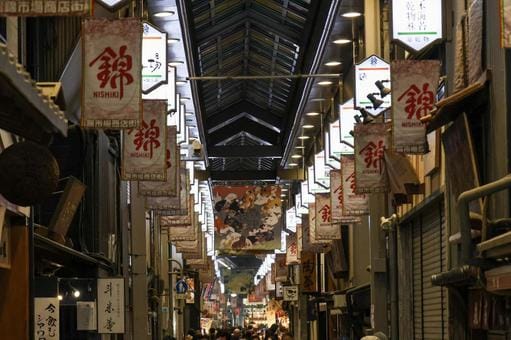
Where Can You Meet Maiko and Geisha?
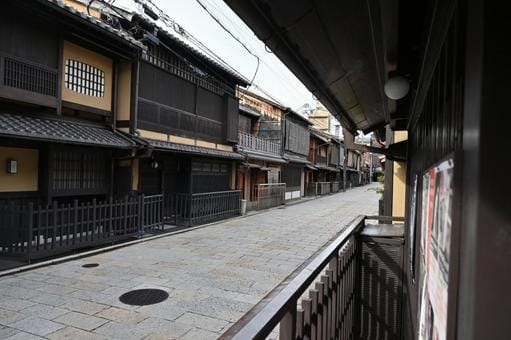
Many tourists visiting Gion wish to meet maiko and geisha. But how can you actually meet them?
If you're lucky, you might pass by maiko or geiko while walking through the alleys of Hanami-koji or Pontocho. However, it's important to note that they are on their way to work. This means that calling out to them or taking photos is disruptive to their work and against the rules.
Some high-class ryotei restaurants allow you to call maiko, but this is a high-hurdle experience even for Japanese people. For foreign travelers who don't know how to make reservations, it's quite difficult to actually meet them.
But don't worry. As I'll introduce later, using a tour can greatly increase your chances of meeting maiko. If you're interested, please check it out.
Click here for more details: Dinner with Maiko in a Traditional Kyoto Style Restaurant Tour
About the Gion Festival
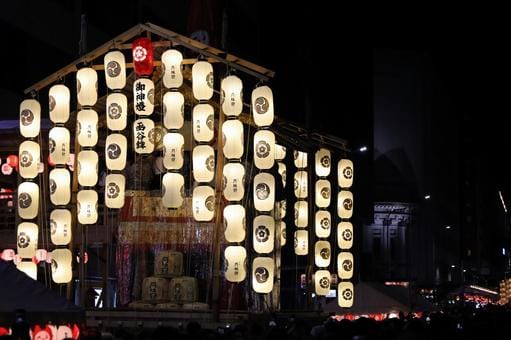
If you're considering a visit to Gion, one piece of information you should definitely know about is the "Gion Festival."
The Gion Festival is a festival of Yasaka Shrine and is known as one of Kyoto's three major festivals. It's held every July, and the most famous part is the "Yamahoko Junko" (float procession). The sight of elaborate objects called "yamahoko" parading through the streets is truly spectacular.
The festival is divided into the pre-festival (July 14-17) and the post-festival (July 21-24). During the pre-festival's yoiyama (July 14-16), you can see a fantastical sight of beautifully decorated yamahoko lined up throughout the town. On the 17th, about 20 yamahoko floats parade through the streets of Gion, filling the area.
During the post-festival, yamahoko are also erected during the yoiyama (July 21-23), and on the 24th, about 10 yamahoko floats parade, marking the climax of the festival.

The Yamahoko Junko of the Gion Festival is a venerable festival that traces its origins back to the 9th century. It's said to have started as a prayer for the eradication of epidemics and has now become a world-renowned festival registered as a UNESCO Intangible Cultural Heritage.
During the festival period, the entire Gion area is filled with excitement and energy. You're also more likely to see maiko during this time. If you visit Gion during this period, I highly recommend experiencing the excitement of the Gion Festival firsthand.
Kyoto Tourist Spots You Can Visit Along with Gion
There are many attractions around Gion. While you're there, why not visit some of these fascinating spots? Here, I'll introduce four particularly recommended places.
Kiyomizu-dera Temple
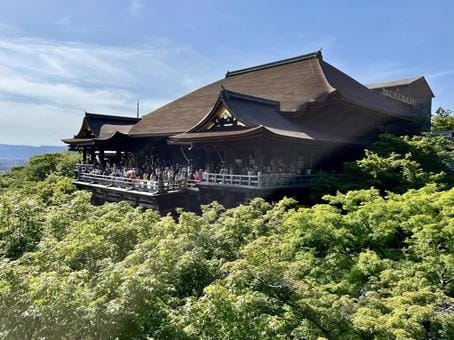
First on the list is the World Heritage site "Kiyomizu-dera Temple," about a 20-minute walk from Gion.
The view from the main hall's stage is truly spectacular. It's no exaggeration to say that it's a representative tourist spot in Kyoto. At Otowa Waterfall, you can experience wish-making, which is said to grant your wishes.
The approach to the temple is lined with souvenir shops and cafes, making it enjoyable to stroll around. It's a spot where you can feel a different charm of Kyoto compared to Gion.
Website: https://www.kiyomizudera.or.jp/en/
If you are interested in Kiyomizu-dera Temple, check the article below! I summarized in more details and how I felt there.
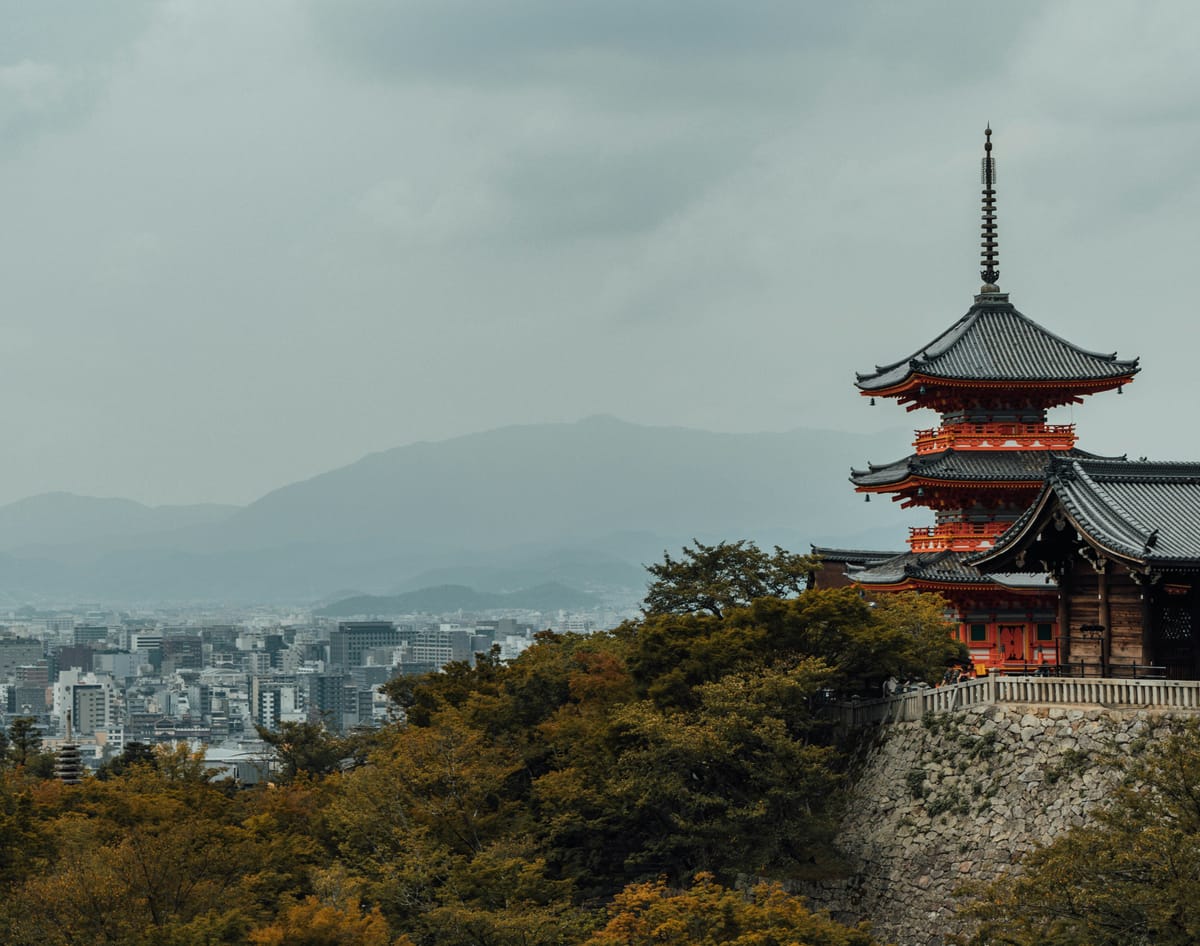
Kodai-ji Temple
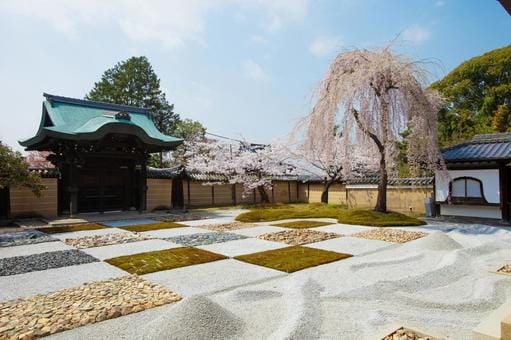
I also recommend "Kodai-ji Temple," about a 15-minute walk from Gion. This temple, opened by Nene, the lawful wife of Toyotomi Hideyoshi, is especially famous for its garden.
The weeping cherry blossoms in the garden are exceptionally beautiful, and many people visit in spring to admire these beautiful flowers. Among all the cherry blossoms I've seen at temples in Kyoto, those at Kodai-ji are my favorite.
Website: https://www.kodaiji.com/
If you are interested in Best Sakura Spots in Kyoto in 2024, check the article below! I summarized Best Sakura Spots I recommend and how I felt each spot.
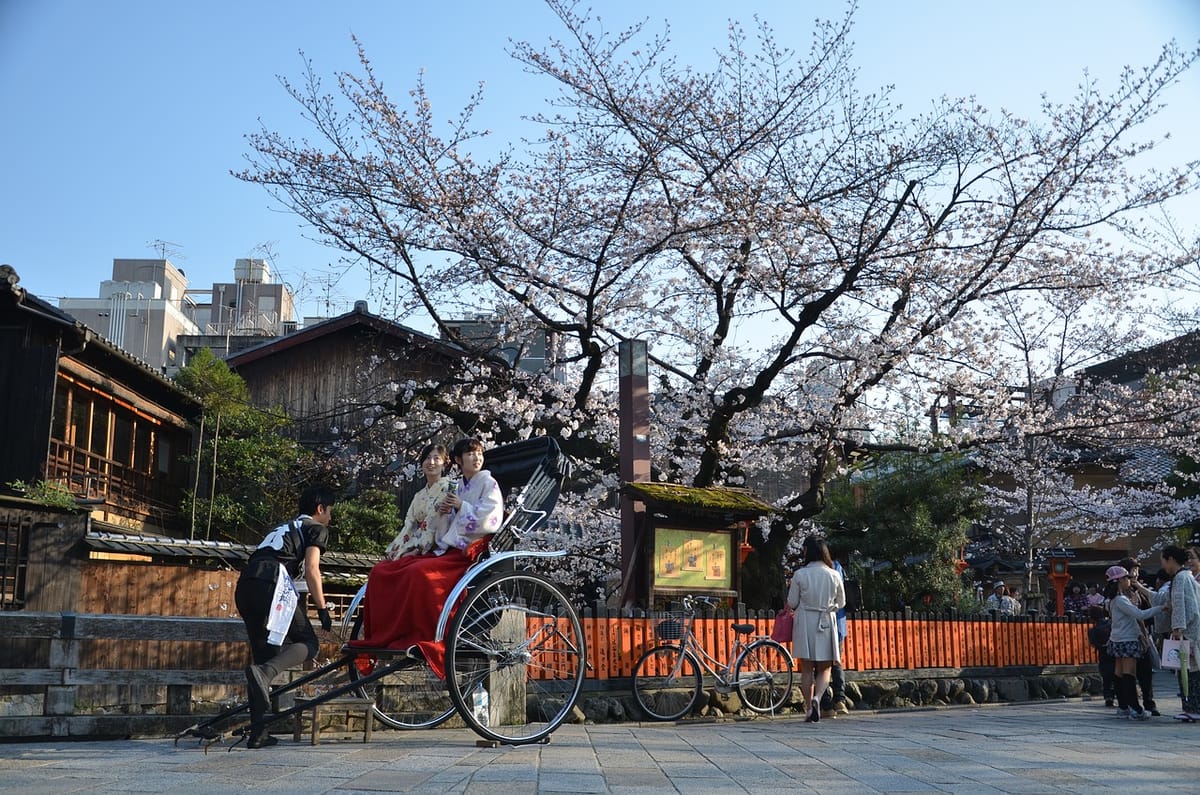
Heian Shrine
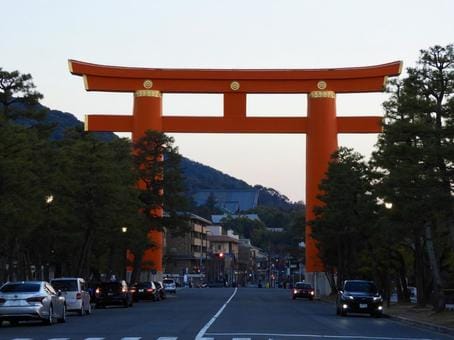
"Heian Shrine," about a 20-minute walk from Gion, is also not to be missed. This shrine, built in the Meiji era to commemorate the 1100th anniversary of the capital's relocation to Heian-kyo (present-day Kyoto), is characterized by its exterior with a large vermilion torii gate.
The shrine grounds also include a garden with beautiful weeping cherry blossoms. In spring, it's crowded with many flower-viewing visitors coming to see the full bloom of cherry blossoms. Why not enjoy a leisurely walk while experiencing the solemn atmosphere typical of Kyoto?
Website: https://www.heianjingu.or.jp/
Gourmet Experiences in Gion
One of the highlights of visiting Kyoto is enjoying delicious food. Gion is full of such gourmet spots.
Obanzai
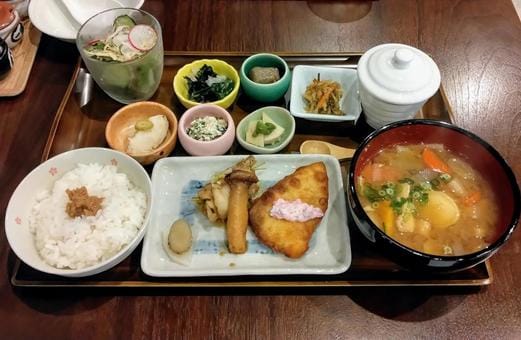
First, I recommend "Obanzai," the traditional home-style cooking of Kyoto. Its charm lies in the simple flavors using Kyoto vegetables, tofu, and fish.
Miyako Yasai Kamo Karasuma
Source: Tabelog by Miyako Yasai Kamo
"Miyako Yasai Kamo Karasuma" is a restaurant that mainly serves fresh vegetables grown in Kyoto. Their healthy obanzai buffet using organic and low-pesticide vegetables is popular. It can be said to be a pioneer among obanzai specialty stores, with branches at Kyoto Station and JR Osaka Station.
The food here is really delicious, and I make sure to visit every time I go to Kyoto. I'm impressed by their cooking methods that bring out the best in vegetables.
<Store Information>
Address: 274 Ogisakayacho, Shimogyo Ward, Kyoto, 600-8095
Closed: None
Phone: 075-351-2732
Hours: 8 AM–9:15 AM, 10:30 AM–3:30 PM, 5 PM–9:30 PM
Website: https://nasukamo.net/
Recommended Obanzai Restaurant 2: Menami
Source: Tabelog by Julien
I also recommend "Menami," where you can enjoy obanzai and sake in a Kyoto-like atmosphere. An obanzai platter costs about 1,500 yen, which is affordable, and the sake pairings are excellent.
It's conveniently located about a 10-minute walk from Hankyu Kawaramachi Station or Gion-Shijo Station. I'm glad that it's easy to drop by during sightseeing. The interior has a very calm atmosphere, and I found myself lingering there.
<Store Information>
Address: 1F SANJO KIYAMACHI BLD. Ⅱ, 96 Nakajimacho, Nakagyo Ward, Kyoto 604-8004
Closed: Wednesdays
Phone: 075-231-1095
Hours: 3 PM–9:30 PM
Website: http://www.menami.jp/
Kyo Ryouri (Kyoto Cuisine)
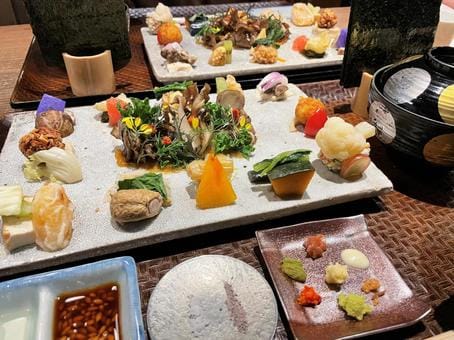
Next, I'd like to introduce "Kyo Ryouri (Kyoto Cuisine)." While it shares some ingredients with obanzai, this is a full-fledged cuisine eaten on special occasions like celebrations.
The delicate appearance and elegance are also big attractions of Kyo ryouri. It's often served at high-end restaurants like ryotei, and you can enjoy sophisticated flavors that make the most of seasonal ingredients.
The budget tends to be on the higher side, and many restaurants require reservations, but if you have the chance, I highly recommend trying this Kyoto gourmet experience.
However, making reservations might be challenging for foreign visitors. In that case, it's best to ask your hotel concierge for help or get assistance from a local Japanese friend.
Hassun
Source: Tabelog by Hiro45316
At the renowned Kyoto cuisine restaurant "Hassun," you can taste exquisite dishes that make the most of seasonal ingredients. The menu is omakase (chef's choice) only, offering dishes made with the best ingredients of the day.
The budget ranges from 10,000 to 15,000 yen for lunch and 20,000 to 30,000 yen for dinner. It's certainly a bit luxurious, but I think it's well worth the price.
Reservations are by phone only, which might be a bit challenging, but if you have a Japanese friend living in Kyoto, why not ask them for help?
By the way, it's located about a 5-minute walk from Gion-Shijo Station, so access is excellent. Despite being a high-class ryotei, the owner is friendly, making for a very enjoyable atmosphere.
<Store Information>
Address: 95-95-4 Sueyoshicho, Higashiyama Ward, Kyoto 605-0085
Closed: Sundays
Phone: 075-561-3984
Hours: 6 PM–9 PM
Website: https://tabelog.com/en/kyoto/A2601/A260301/26002259/
Yorozu-Enraku
Source: Tabelog by Yorozu-Enraku
Enjoying Kyoto cuisine in a 120-year-old Kyoto-style house is truly special. The ryotei "Yorozu-Enraku" is treasured by Kyoto locals, and its classic appearance is worth seeing.
I hear you can also call for maiko, but this is quite a high-hurdle service not only for foreigners but even for Japanese. However, using the tour I'll introduce later, you can easily and surely meet maiko.
<Store Information>
Address: 570-143 Gionmachi Minamigawa, Higashiyama Ward, Kyoto, 605-0074
Closed: Sundays, Mondays
Phone: 075-533-1511
Hours: 5 PM–11 PM
Website: http://www.zuzu.jp/
Sweets That Make You Feel Kyoto
Source: Tabelog by Goemon
When in Gion, I definitely want to try Japanese sweets. Especially sweets using matcha and traditional sweets have a Kyoto-unique taste that fascinates many tourists. Among these, I particularly recommend the following two stores.
Saryo Tsujiri Tea House, Gion Main Shop
Source: Tabelog by Cafe Moca Otoko
First is the "Saryo Tsujiri Tea House, Gion Main Shop," a cafe attached to the main store of "Tsujiri," a long-established tea shop in Kyoto. It 's especially famous for its parfaits and is known as a popular spot where people line up. It's no exaggeration to say that it's a representative store for matcha sweets.
If you want to conquer Kyoto's sweets, I recommend starting here. The matcha parfait, with its perfect balance of rich matcha flavor and sweetness, is a taste you won't forget once you've tried it.
<Store Information>
Address: 573-3 Gionmachi Minamigawa, Higashiyama Ward, Kyoto, 605-0074
Closed: None
Phone: 075-561-2257
Hours: 10:30 AM–7 PM
Website: https://www.giontsujiri.co.jp/
Shogoin Yatsuhashi Sohonten Takashimaya Kyoto Store
Source: Wikipedia
Another recommendation is the "Shogoin Yatsuhashi Sohonten" located in a department store in the Gion area. This is a long-established yatsuhashi shop with over 300 years of history, where you can enjoy flavors made with traditional methods.
Historically, the baked yatsuhashi was famous, but now the soft nama yatsuhashi is more popular. One of the joys is that the flavors change with the seasons, and the elegant Kyoto-like taste is irresistible.
There are many branch stores throughout Kyoto city, so you can buy them elsewhere, but there are also many similar products. Please refer to the symbol in the image and be sure to buy the traditional sweets of Shogoin.
Website: https://shogoin.co.jp/en/
Tours and Attractions to Fully Enjoy Gion
If you've come all the way to Gion, you'll definitely want to participate in tours and activities. There are plenty of experiences you can only have here, such as walking tours with local guides and tours where you can interact with maiko.
Tours to Enjoy Maiko and Geisha Culture
"Dinner with Maiko in a Traditional Kyoto Style Restaurant Tour" by Magical Trip
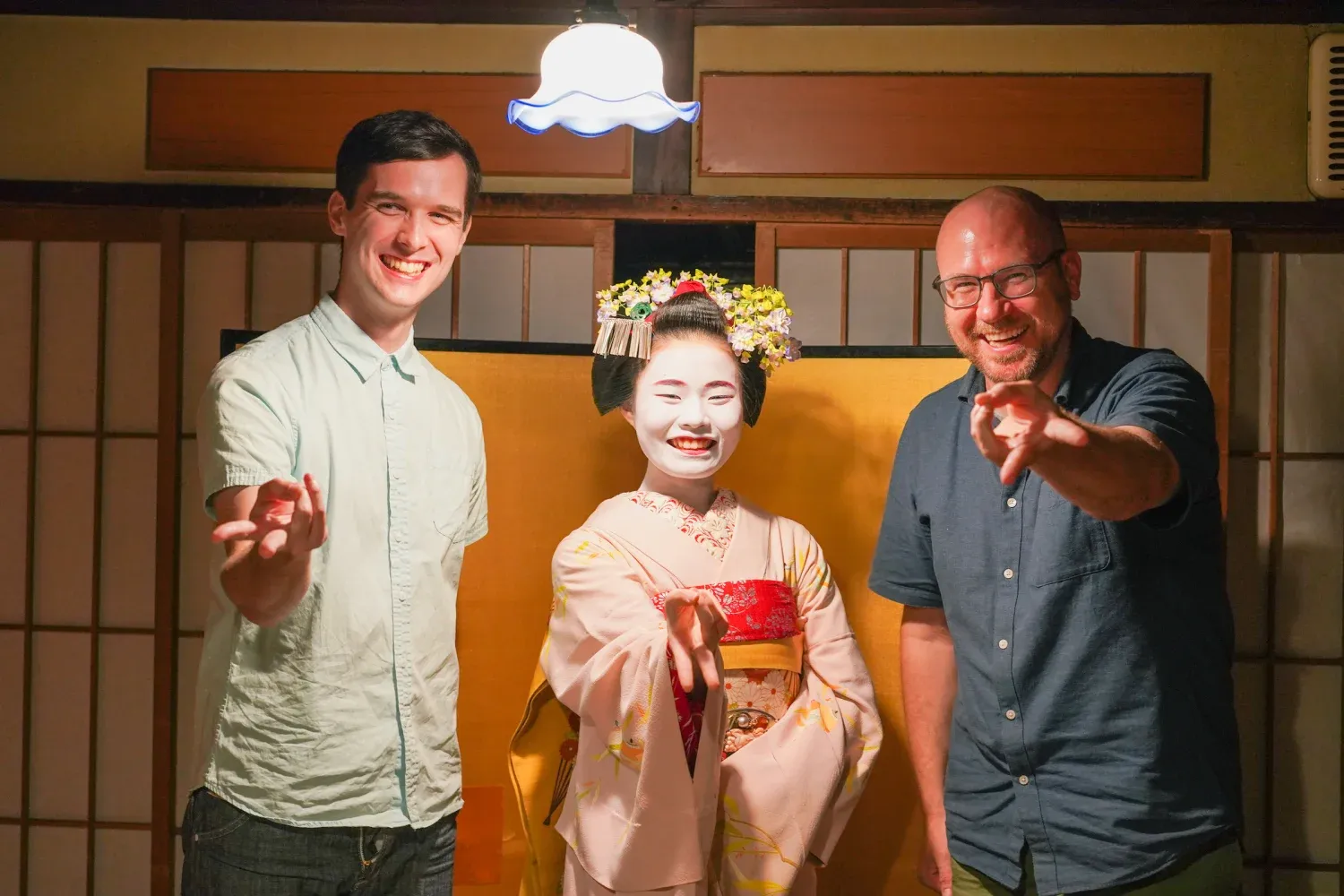
First, I'd like to introduce the "Dinner with Maiko in a Traditional Kyoto Style Restaurant Tour" offered by us at Magical Trip. This plan allows you to explore the Gion area with a local guide and then enjoy dinner with a maiko at a traditional Kyoto-style restaurant.
On this tour, you can enjoy a full course of authentic Kyoto cuisine while conversing with a maiko and experiencing traditional "ozashiki asobi" (geisha parlor games). Moreover, you can take photos together at the end, making it an unforgettable memory.
The price is about $274 per person, which is a bit on the high side, but I think it's well worth it. It's a rare opportunity to interact directly with a maiko, so if you're interested, please check it out.
Click here for more details: Dinner with Maiko in a Traditional Kyoto Style Restaurant Tour
"Meet a Geisha in Kyoto: Exclusive Geisha Show in Gion" by Japan Wonder Travel
Source: Japan Wonder Travel
Next, I'd like to introduce "Meet a Geisha in Kyoto: Exclusive Geisha Show in Gion". The main focus of this tour is watching a maiko performance.
Light snacks are provided, but rather than eating while watching, the purpose is to view the maiko show. The price is about 20,000 yen per person, which is a bit high, but I think it's a valuable opportunity to see a maiko dance up close.
I recommend this tour for those who don't particularly care about the food or drink and just want to experience the atmosphere of a maiko!
Click here for more details: Meet a Geisha in Kyoto: Exclusive Geisha Show in Gion
Tours to Fully Enjoy Gion's Food
"Kyoto Night Foodie Tour" by Magical Trip
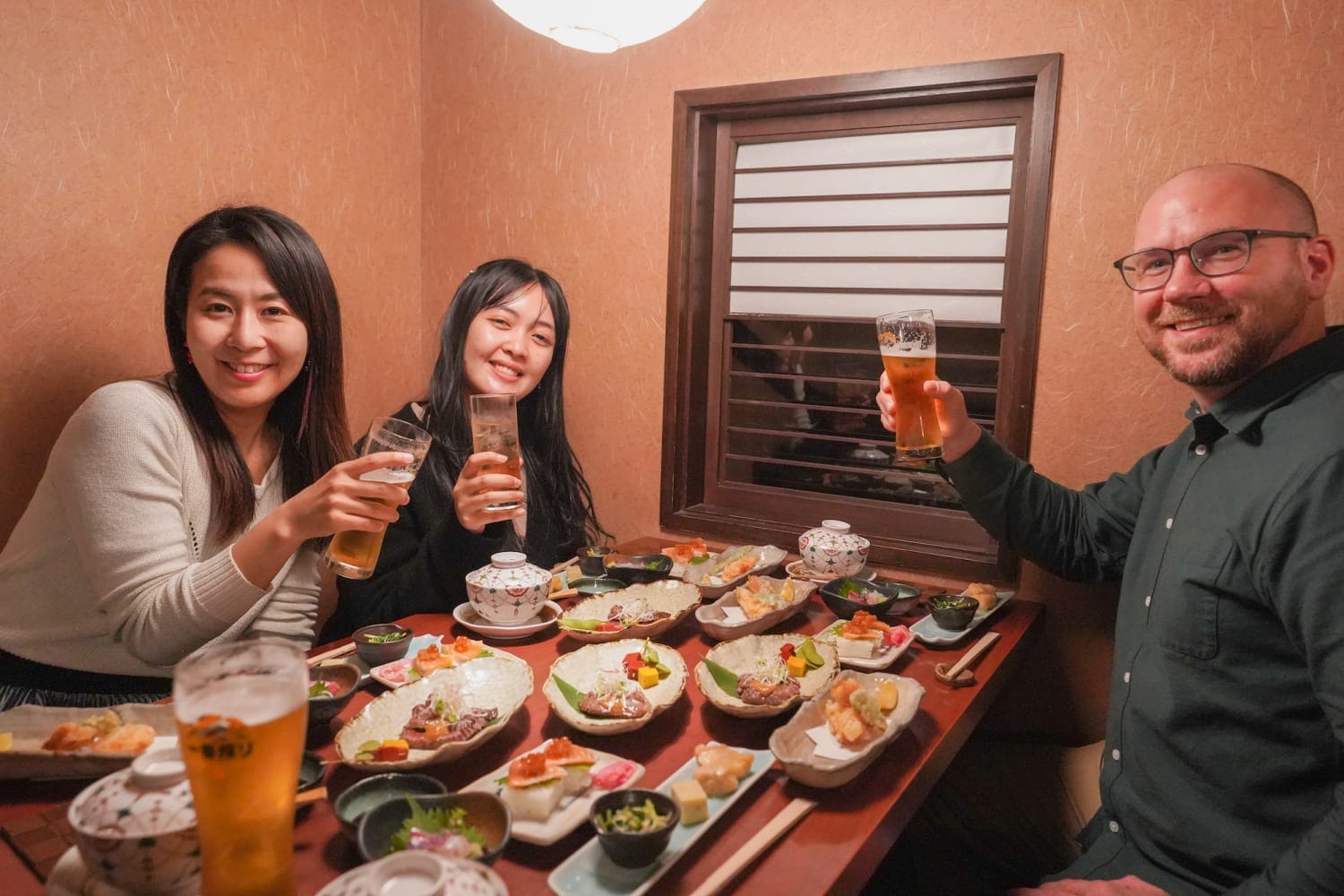
The charm of Gion is undoubtedly its food. Our "Kyoto Night Foodie Tour" at Magical Trip allows you to fully enjoy this food culture.
In fact, this tour is ranked 14th in the world on TripAdvisor. You can taste plenty of traditional Kyoto dishes while strolling through Gion and Pontocho. What's more, you'll be taken to local places that might be difficult for foreigners to enter on their own, allowing you to experience deep Gion gourmet.
The price is about $133 per person, including meal costs. I highly recommend this tour for those who want to thoroughly enjoy local delicacies.
Click here for more details: Kyoto Night Foodie Tour
If you are interested in Nighttime in Kyoto, check the article below! I summarized how and where you can enjoy Nighttime in Kyoto as much as possible.
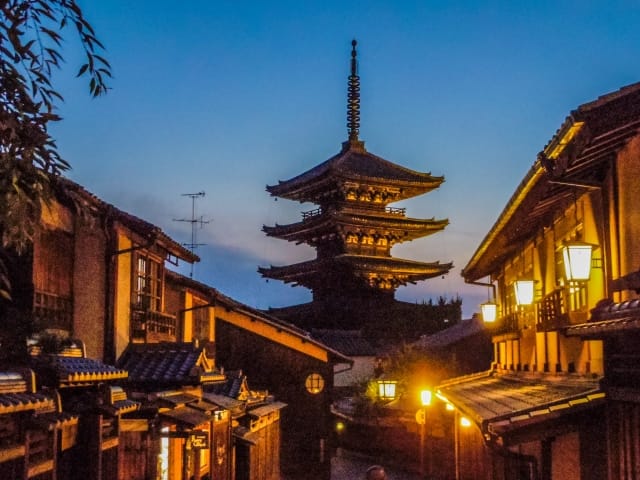
"Nishiki Market Brunch Walking Food Tour" by Magical Trip
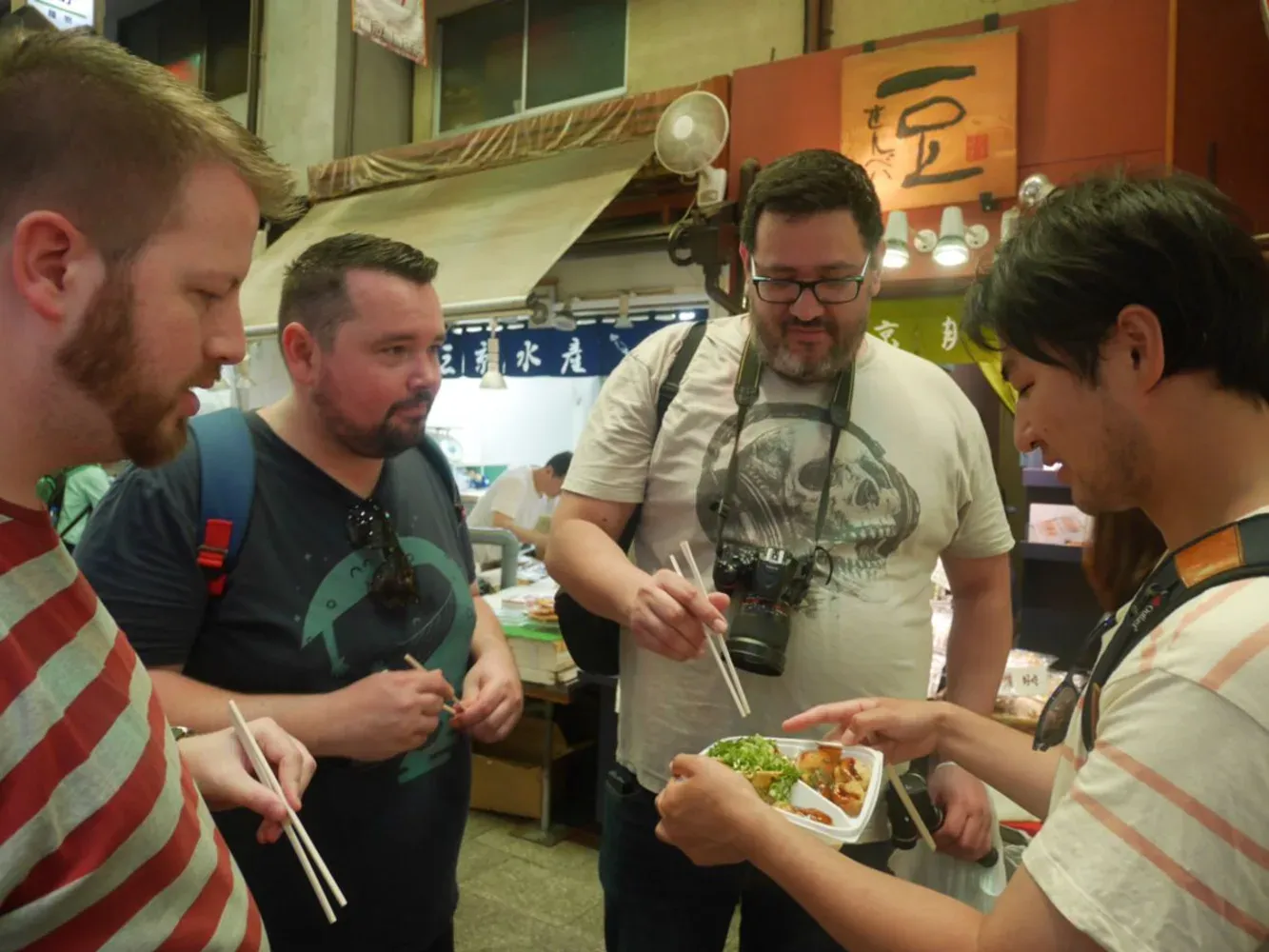
The "Nishiki Market Brunch Walking Food Tour" allows you to enjoy food hopping in Nishiki Market in the morning while also experiencing the charm of Gion. This is also one of our tours at Magical Trip.
After exploring the atmospheric areas typical of Kyoto, you'll enjoy an exciting food walk through Nishiki Market. It also includes brunch at a restaurant in the market, and the price is very reasonable at about $45 per person.
This plan is perfect for those who want to enjoy the vitality and deliciousness of Nishiki Market along with a stroll through Gion.
Click here for more details: Nishiki Market Brunch Walking Food Tour
Activities
Samurai Ninja Museum
After enjoying the gourmet experiences, why not try some activities? At the "Samurai Ninja Museum," you can enjoy samurai and ninja culture up close.
Taking commemorative photos in actual samurai or ninja costumes is very popular here. There are also displays of samurai weapons and attractions like the "Ninja Shuriken Throwing Competition".
You can feel like you've stepped into a movie world, so I definitely recommend visiting.
Website: https://mai-ko.com/samurai/
Kimono Rental
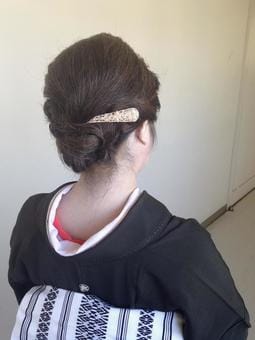
There are many kimono rental shops around Gion. You can enjoy coordinating matching colored kimonos as a couple, or wearing pop-patterned kimonos with friends.
Of course, they offer dressing assistance, and you can also rent hairstyling and accessories, so even beginners can feel at ease. If you stroll around Gion in a kimono, you're sure to feel more in the Kyoto mood. I recommend making a reservation in advance, but there are plenty of shops you can enter on the day as well. Here's an example of a shop:
Website: https://ewha-yifu.com/shops/kyoto-area/gion/
Frequently Asked Questions About Visiting Gion
Lastly, I'll answer some common questions about visiting Gion.
How long does it take to tour Gion?
As I've introduced in this article, there are many attractions in the Gion area. If you include meals, you should plan for 3-4 hours.
If you're also visiting surrounding areas like Kiyomizu-dera, I recommend planning for 5-6 hours.
What should I wear when touring Gion?
Casual clothing is absolutely fine. However, if you're renting a kimono, I recommend comfortable footwear.
If you've managed to make a reservation at a high-class ryotei, I suggest smart casual attire.
I've thoroughly introduced the charms of Gion, a representative tourist area in Kyoto.
The Gion area is a must-visit spot for a Kyoto trip. Since there are many attractions, I hope you'll use this article as a reference to efficiently tour the famous places.
One of the wonderful things about Gion is that you can enjoy it differently in each season, such as the Gion Festival in summer and the cherry blossoms in Maruyama Park in spring. Please stroll through this area while reflecting on the history of Kyoto!
If you are interested in Kyoto Photo Spot, check the article below! I summarized how and where you can enjoy Kyoto Photo Spot as much as possible.
